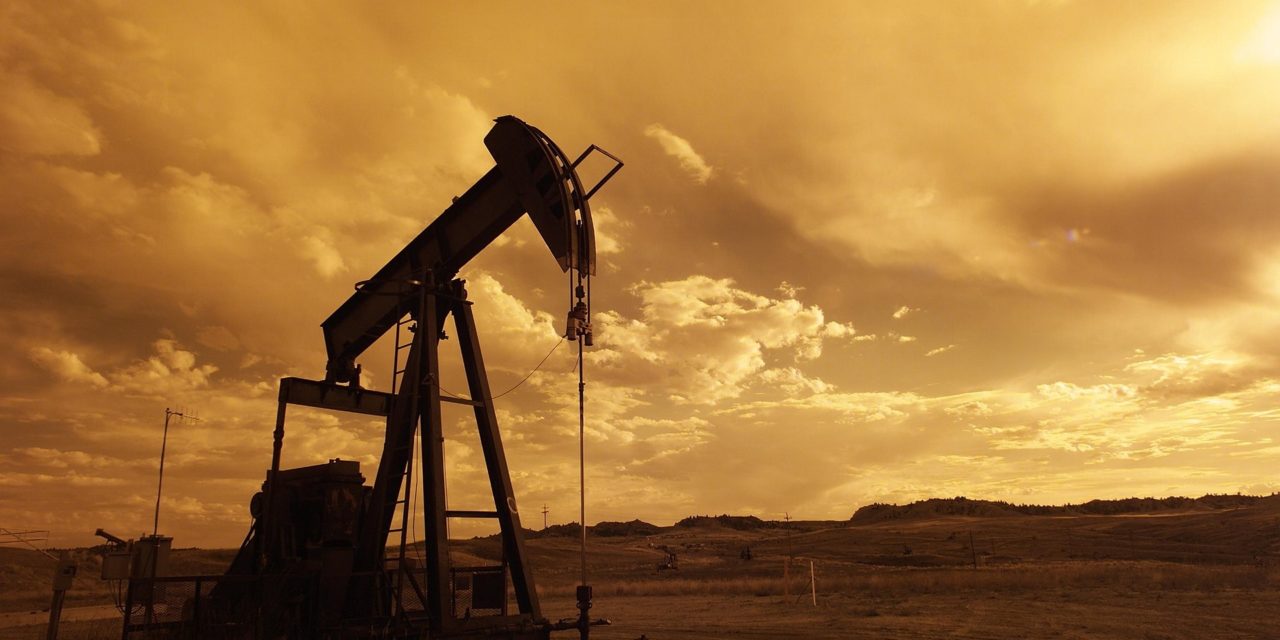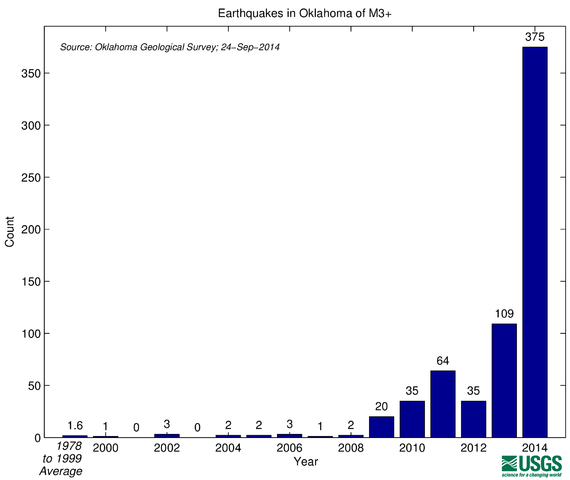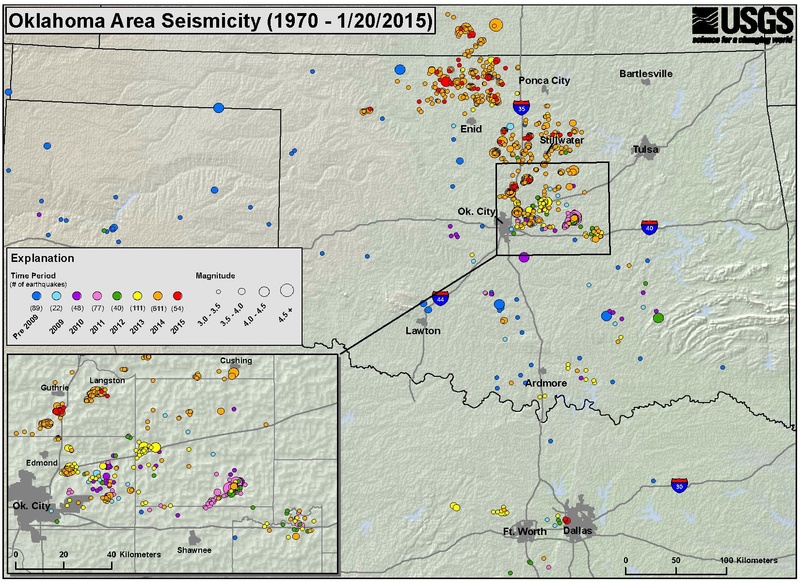Ask anyone to name a major fault line in the United States. Most people will probably mention the infamous San Andreas Fault in California, the inspiration for plenty of disaster movies, TV shows, and books about earthquakes that destroy the city of Los Angeles and everything around it.
However, studies have shown that hydraulic fracturing, the practice of injecting water, sand, and chemicals into shale to release gas, as well as wastewater disposal wells from oil and gas development is triggering earthquakes throughout the Midwest. The U.S. Geological Survey has connected the recent increase in earthquakes in Oklahoma and other popular fracking states like Texas with the fluid injection process. Another study accepted for publication this month in Geophysical Research Letters presents a worrisome prediction: injection wells and the small earthquakes linked to them are now raising concerns that dormant fault lines in Oklahoma are being reawakened and could cause larger earthquakes and more serious damage in the coming years.
According to research by the U.S. Geological Survey and others, earthquakes measuring magnitude 3.0 or higher have been occurring 300 times more frequently in north-central Oklahoma since 2009 than in earlier decades, a startling number for geologists. Last year Oklahoma saw 17 earthquakes measuring at least a magnitude 4.0. From 1978 to 2008, Oklahoma averaged only two earthquakes of magnitude 3.0 or larger per year. The research will be used to create a new earthquake hazard map for the state. This time, though, the map will include earthquakes believed to be caused by human actions, including fracking, wastewater disposal, and geothermal energy operations.
Another recent peer-reviewed paper published in Science urged greater transparency and collaboration between the energy industry, government, researchers, and the public in mitigating the effects of earthquakes triggered by fluid injection. The paper, authored by the U.S. Geological Survey, other federal scientists, and state seismologists, acknowledged the difficulty in attempting to regulate disposal wells but stated, “The science of induced earthquakes is ready for application.”
To be fair, research thus far does not indicate that the problem is the fracking process itself, but rather where and how it is conducted, and how the resulting waste is disposed. As geophysicist Katie Keranen and her fellow researchers have shown, although thousands of disposal wells operate without any correlation to seismic events, just four of the highest-rate wells were capable of inducing 20% of the earthquakes in the central United States from 2008 to 2013.
Moreover, fracking has been expanding quickly in recent years, and it produces a lot of wastewater. Now fracking may also be producing lawsuits in which homeowners allege that wastewater injecting wells have caused earthquakes that damaged their property. The worst of these events was a November 2011 series of earthquakes and aftershocks, the largest measuring at least magnitude 5.6, that destroyed more than a dozen homes and injured two people in central Oklahoma.
A lawsuit filed February 10 in Lincoln County District Court by Prague homeowner Jennifer Lin Cooper alleges that the 2011 earthquakes damaged her home and seeks class-action status for residents of nine Oklahoma counties whose homes and property values have allegedly been damaged by the earthquakes. The lawsuit lists injection well operators New Dominion LLC, Spess Oil Company, and 25 other unnamed energy companies as defendants.
Sandra Ladra, another Prague resident, was injured in the November 2011 earthquake and filed a similar lawsuit in August 2014 against the same defendants. That suit was dismissed by a Lincoln County judge in October for lack of jurisdiction. However, the Oklahoma Supreme Court decided to hear Mrs. Ladra’s appeal, and the Court’s decision could determine whether oil companies can be held liable for injuries and damages. If that happens, more lawsuits could follow once the precedent is set.
Keep an eye on our blog for updates on these cases and the potential ramifications of the upcoming decision by the Oklahoma Supreme Court.








Recent Comments